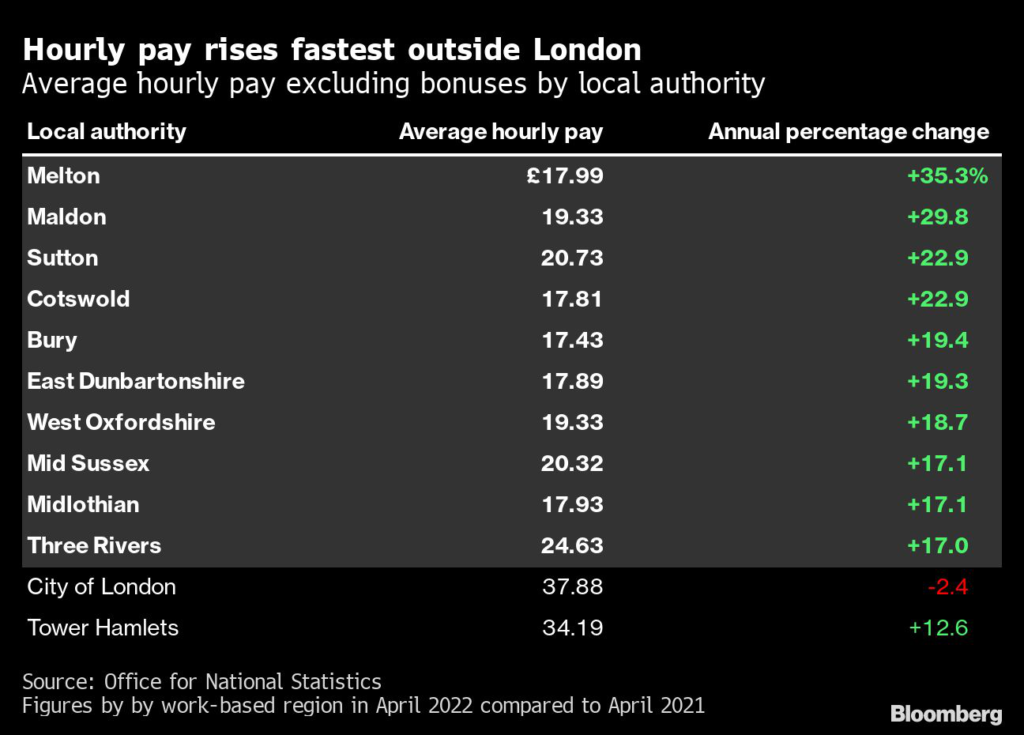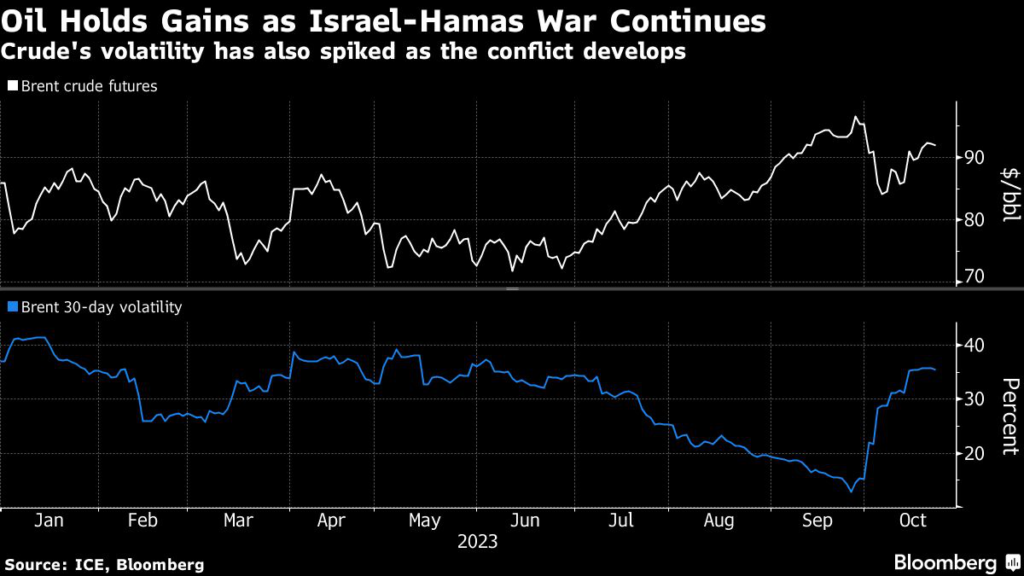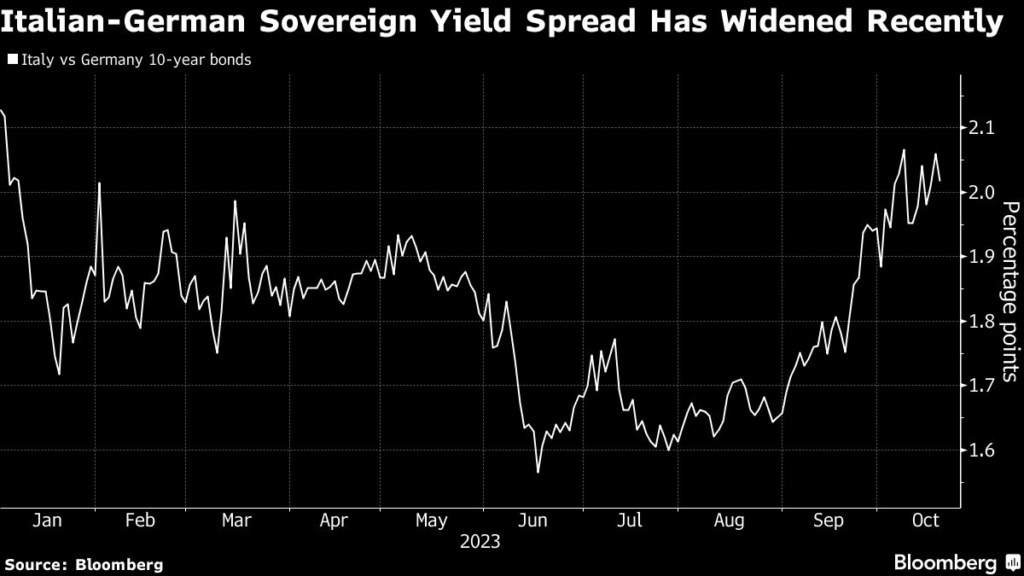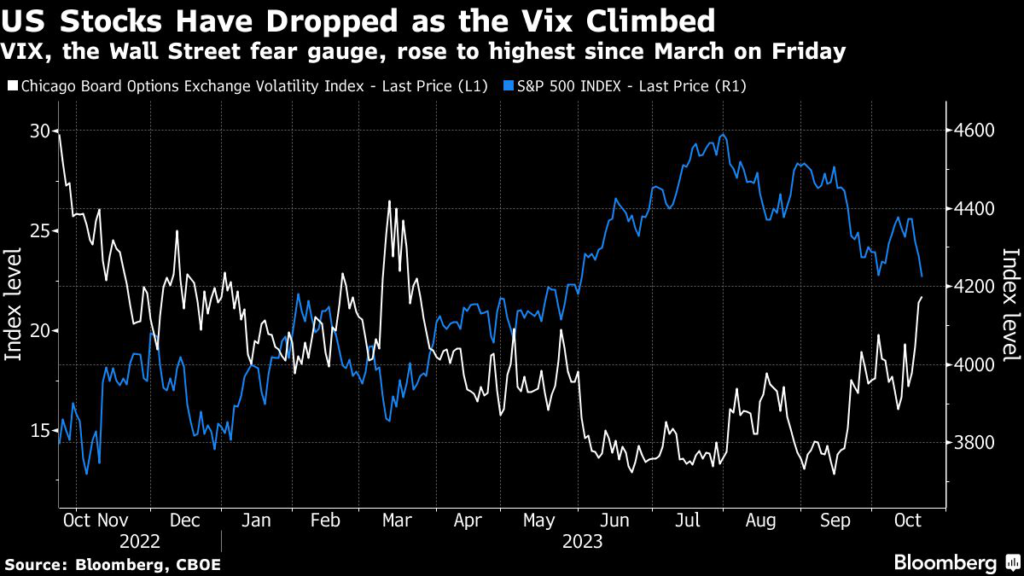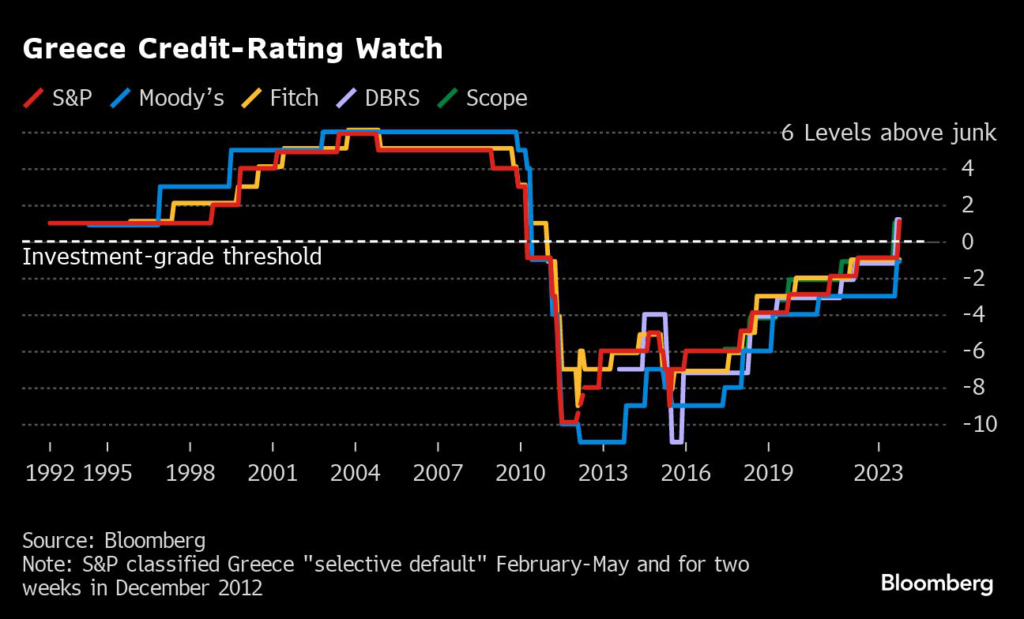Wages jumped by as much as 35% in one British region last year, beating the national average by more than seven times and sharply contrasting the City of London where hourly rates declined, according to an analysis of Office for National Statistics data.
(Bloomberg) — Wages jumped by as much as 35% in one British region last year, beating the national average by more than seven times and sharply contrasting the City of London where hourly rates declined, according to an analysis of Office for National Statistics data.
A study of wages across the nation carried out by financial services provider CMC Markets looked at full time hourly pay for workers excluding bonuses. In Melton, Leicestershire, pay increased by more than a third to £17.99 an hour in April 2022, up from £13.30 the year before.
One of the biggest employers in the region is Melton Mowbray-based food company Samworth Brothers, owner of Cornish pasty-maker Ginsters and the largest producer of the eponymous pork pies. It employs over 10,000 people, and reported £17 million of profit last year.
Across the United Kingdom pay was up by just 5% on average in April 2022 compared to the year before, according to ONS data. Consumer price inflation for the same period was 9%.
The largest wage increases outside Melton were Maldon in Essex, which saw a 30% growth in wages to £19.33 an hour, and the Cotswolds, a rural holiday hot-spot where wages rose 25% to £17.81 an hour.
Wages grew fastest in areas outside the nation’s major financial hubs, although jobs in London’s financial center still pay the most of any area.
Pay for workers in Tower Hamlets, which includes financial district Canary Wharf, was up 12.6% to £34.19 an hour, although it still doesn’t match the UK’s best paid workers in the City of London. They saw their wages fall 2.4% to £37.88 an hour.
The study comes as the Bank of England said businesses expect wage growth to continue, as the labor market stays tight and price pressures linger. The outlook for wages remains a concern for the central bank, which is battling to get inflation back down from a 41 year-high to its 2% target.
“What’s fascinating to see is the huge wage growth in so many areas, and how it isn’t just tied to one area with locations across Britain making their way into the top ten,” says CMC Markets’ chief market analyst Michael Hewson. “This wage growth is also seen outside of financial hubs and major cities, which may make people question whether the inner city pressure is worth it.”
More stories like this are available on bloomberg.com
©2023 Bloomberg L.P.

